Ok, someone recently asked me about this, so I decided a Weekly Word on it might not be a bad idea. A mallard is a species of duck, specifically Anas platyrhynchos. It is the most common species of duck and tends to live in close proximity to man, so if you’ve seen a duck, in all likelihood it was a mallard. The male mallard (known as a drake) has a gray back, a brown chest patch, an iridescent green head and a yellow beak. The female (known as a hen) is a mottled brown with a dark mottled beak. Both have bright orange legs. During molting (when the birds shed and replace their feathers) the male mallard can look somewhat like the female. When this happens the male is said to be in eclipse plumage.
Most domestic ducks, the kind you see on farms, are descended from the mallard. Domestic ducks tend to be much larger than their wild relatives and are usually white. Sometimes domestic ducks escape into the wild and you will see them alongside the wild ducks in your local park. They’re easy to spot because they are usually much larger and if not white they will have white patches here and there. This coloration is known as piebald. Domestics sometimes breed with their wild counterparts producing smaller piebald ducks.
There is another rarer duck known as the American Black Duck (Anas rubripes) which you may see alongside the mallards in your local park. These ducks look so much like mallards that you might be surprised to find that they are in fact a distinct species. The male American Black Duck looks much like a female mallard only darker and with a yellow beak. The female American Black Duck looks like a darker version of the mallard female. Both mallards and blacks have a purple/blue patch on their wings, but the mallard’s is edged in white, while the black duck’s is not. The American Black Duck does hybridize with the mallard but the tendency for hybrid females to be less fertile is threatening the Black Duck population.
The following photos were taken in a park near where I live in New Jersey.
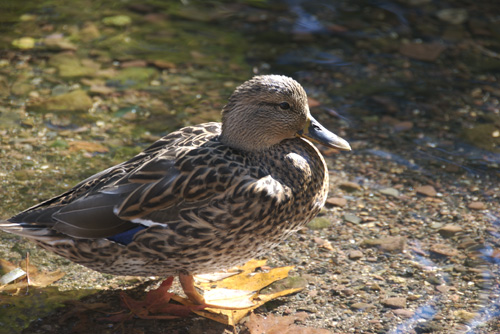
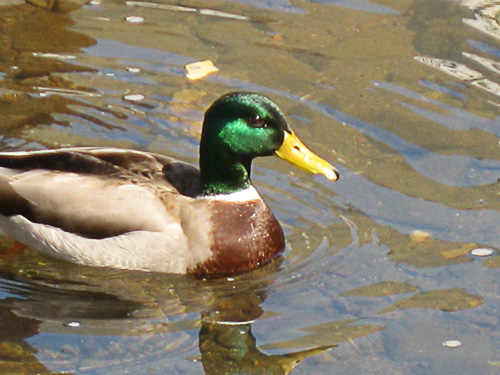
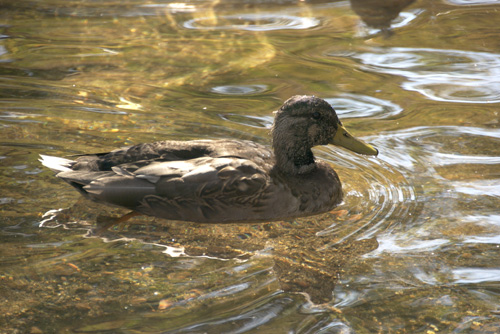
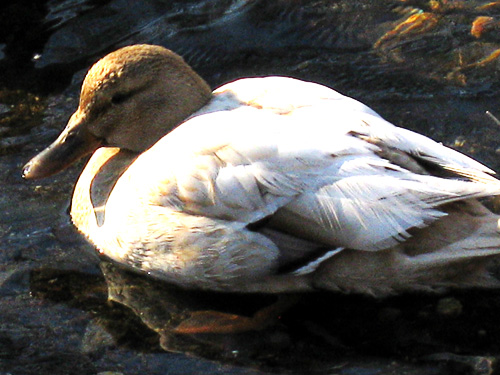

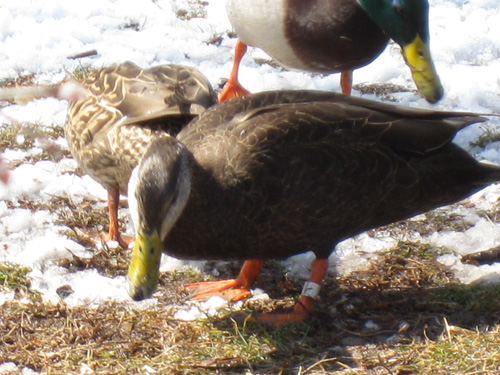


0 Comments